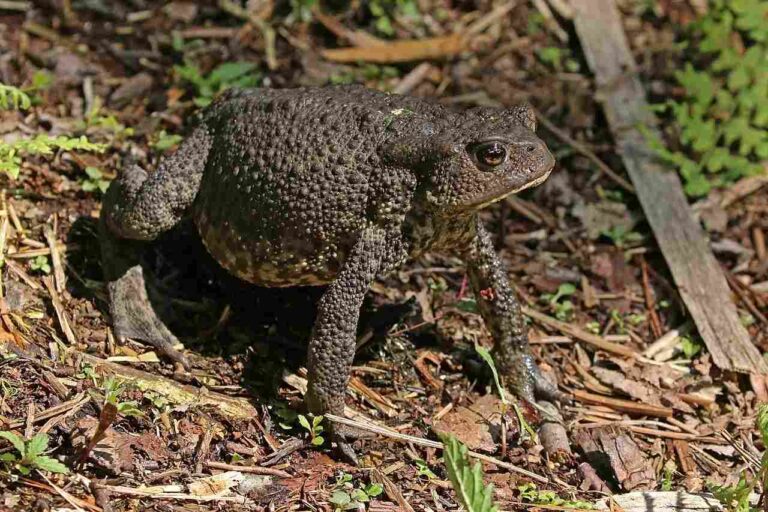Urban Ecosystem Definition, Characteristics, Examples, Importance
Urban ecosystem is a type of ecosystem in which the abiotic and biotic conditions have been modified significantly to suit human needs. This article discusses urban ecosystem definition, characteristics, comparison, examples, and importance, as outlined below;
-Urban Ecosystem Definition: 5 Ways to Define Urban Ecosystems
-Urban Ecosystem Characteristics
-Difference between Urban Ecosystem and Natural Ecosystem
-Importance of Urban Ecosystems
Urban Ecosystem Definition: 5 Ways to Define Urban Ecosystems
Urban ecosystem refers to the assemblage of living and non-living, interdependent entities that occupy areas where urbanization has occurred.
The above is a most basic form of urban ecosystem definition, because it summarily mentions the most essential attributes used to identify this type of ecosystem.
To better understand what urban ecosystem means, it is helpful to compare its basic attributes with those of natural ecosystems like forests, deserts, tundras and grasslands. The following urban ecosystem definition does this;
An urban ecosystem is an ecosystem that differs from natural ecosystems by being human-dominated, so that its characteristics, evolution and components are all driven primarily by human activities [1].
The term 'characteristics' mentioned above is very important when discussing and trying to understand urban ecosystems.
In turn, a major factor by which we can understand characteristics, is the components of urban ecosystems, as they can only be determined and modified by the characteristics of these ecosystems.
Below is an alternative urban ecosystem definition that highlights its basic components;
Urban ecosystems are human-dominated and modified ecosystems whose components are biotic factors like microbes, plants, animals; abiotic factors like air, water, soil, nutrients; and sociological factors like economy, human needs, activities and customs [5].
Next is an urban ecosystem definition that lists some examples of urban ecosystems;
Urban ecosystem is an ecosystem whose natural attributes have been modified by human needs and activities; and which is exemplified by cities, suburbs, and smaller entities like parks, urban forests, artificial lakes, streams, cultivated land, roadside trees, and green roofs [7] [2].

Based on the definitions so far, it can also be deduced that urban ecosystems are part of natural ecosystems, that have been derived from natural resources and modified to suit human need [8].
Lastly, the urban ecosystem definition is given based on types of urban ecosystems;
An urban ecosystem is an artificial ecosystem that is characterized by human dominance, modification and environmental impacts; and which may be differentiated into various types like; simple and complex ecosystems.
Urban ecosystems are found in areas where human activities have led to significant changes in hydrological processes, soil, air, and native species distribution. Such areas are mostly those where major urbanization has occurred, so that most of the natural attributes of the environment have been modified.
Urban Ecosystem Characteristics
Urban ecosystem characteristics are;
1). Human dominance
2). Significant modification
3). Relative complexity
4). Sociological influence
5). Higher temperature than adjacent ecosystems due to human activity
6). Susceptibility to anthropogenic hazards like heat waves, climate change, air pollution, and urban heat island effect

Difference between Urban Ecosystem and Natural Ecosystem
The main difference between urban ecosystem and natural ecosystem is the dominant presence and influence of humans in urban ecosystems.
As a result of this dominance and influence, the urban ecosystem is more complex than natural ecosystems, as it comprises of both natural and anthropogenic feature that are integrated into a single unit or area.
Natural ecosystems are far more ecologically stable than urban ecosystems. This is because they are governed by consistent, continuous and sustainable natural cycles, unlike urban ecosystems that are subject to unprecedented human alterations.
What this implies is that natural ecosystems have a much higher level of ecologic sustainability than urban ecosystems.
Urban ecosystems are more susceptible to both anthropogenic and natural hazards, than natural ecosystems. This higher susceptibility can be traced to the impact of human activities on the abiotic components of the ecosystem.
Examples of environmental problems with higher risk of occurrence in urban ecosystems are; resource depletion, pollution, deforestation, desertification, and flooding.
As a result, efforts at ensuring sustainability through water conservation, soil conservation, carbon capture and other similar practices, are more important in urban ecosystems.
Natural ecosystems manage resources through natural recycling of bioenergy and biomass across the trophic levels of the energy pyramid [6].
On the other hand, resource management in urban ecosystem is a complicated issue that requires circular economic practices and sustainable development to be achieved, because of the difficulty of balancing resource consumption and replenishment in human-controlled settings.
The table below summarizes the difference between urban ecosystem and natural ecosystem;
Comparison Criteria | Urban Ecosystem | Natural Ecosystem |
Human prominence | High | Low |
Relative complexity | High | Low |
Ecologic stability | Low | High |
Components | Abiotic, biotic, sociological | Abiotic, biotic |
Hazard susceptibility | High | Low |
Urban Ecosystem Examples
Urban ecosystem examples include;
1). Cities
2). Suburbs
3). Lawns
4). Urban forests
5). Biodynamic farms
6). Roadside trees
7). Artificial lakes
8). Green roofs
These urban ecosystems vary in scale and scope; with some of them existing as parts of others (such as lawns, roadside trees and artificial lakes that are all found in cities).
For each of these examples, what qualifies them as urban ecosystems is the dominance of human presence, activity, impact and modification.
Importance of Urban Ecosystems
Urban ecosystems are important due to their role in supporting human development in all areas including social, economic, and technological.
The modified features of urban ecosystems such as buildings, power plants, water dams, bridges and transport systems; are all essential to ensuring the survival of humans on Earth.
Urban ecosystems are particularly important for driving socioeconomic development.
Most modern economic activities are based in urban areas. These areas have also served as centers from which technological development springs up, in the form of artificial intelligence, smart house development, renewable energy, clean transport, green building, sustainable agriculture, and sustainable manufacturing, among others.
The higher socioeconomic prospects of the urban ecosystem has led to rural-urban migration in many parts of the world, as local populations move to urban areas for improved quality of life [4].
Urban ecosystem is beneficial for its ability to be modified to meet specific human needs. This ability is portrayed through urban ecosystem services, by which air quality, environmental safety and human productivity can be optimized [3].
The importance of urban ecosystems can be summarized as follows;
1). Suitability for human survival
2). Facilitation of socioeconomic development
3). Role as centers of technological growth
4). Harmonization of natural and anthropogenic entities
Conclusion
An urban ecosystem is a complex and dynamic system comprised of large human populations, infrastructure, plants, animals, and modified environments.
Urban ecosystem characteristics are; human dominance, significant modification, complexity, sociological influence, and high relative temperature.
The main difference between urban ecosystem and natural ecosystem is that urban ecosystems have been modified significantly by the activities of a large, indwelling human population.
Examples of urban ecosystems are; cities, suburbs, lawns, urban forests, biodynamic farms, roadside trees, artificial lakes, and green roofs.
The importance of urban ecosystems is based on their human suitability, socioeconomic prospects, and role in technological development.
References
1). Bai, X. (2016). "Eight energy and material flow characteristics of urban ecosystems." AMBIO A Journal of the Human Environment 45(7). Available at: https://doi.org/10.1007/s13280-016-0785-6. (Accessed 20 January 2023).
2). Bolund, P.; Hunhammar, S. (1999). "Ecosystem services in urban areas." Ecological Economics, Volume 29, Issue 2, May 1999, Pages 293-301. (Accessed 21 January 2023).
3). Gómez-Baggethun, E.; Gren, A.; Barton, D. N.; Langemeyer, J.; McPhearson, T.; O'Farrell, P.; Andersson, E.; Hamstead, Z.; Kremer, P. (2013). "Urban Ecosystem Services." Urbanization, Biodiversity and Ecosystem Services: Challenges and Opportunities (pp.175-251). Available at: https://doi.org/10.1007/978-94-007-7088-1_11. (Accessed 21 January 2023).
4). Grima, N.; Corcoran, W.; Hill-James, C.; Langton, B.; Sommer, H.; Fisher, B. (2020). "The importance of urban natural areas and urban ecosystem services during the COVID-19 pandemic." PLoS One. 2020 Dec 17;15(12):e0243344. Available at: https://doi.org/10.1371/journal.pone.0243344. (Accessed 21 January 2023).
5). Mollashahi, H.; Szymura, M. (2022). "Urban Ecosystem: An Interaction of Biological and Physical Components." Biodiversity of Ecosystems. Available at: https://doi.org/10.5772/intechopen.97742. (Accessed 21 January 2023).
6). Omer, A. M. (2012). "Biomass energy resources utilisation and waste management." Agricultural Sciences 03(01). Available at: https://doi.org/10.4236/as.2012.31016. (Accessed 21 January 2023).
7). Rebele, F. (1994). "Urban Ecology and Special Features of Urban Ecosystems." Global Ecology and Biogeography Letters, Vol. 4, No. 6 (Nov., 1994), pp. 173-187 (15 pages). Available at: https://doi.org/10.2307/2997649. (Accessed 21 January 2023).
8). Tan, P. Y.; Zhang, J.; Masoudi, M.; Alemu, J. B.; Edwards, P. J.; Grêt-Regamey, A.; Richards, D. R.; Saunders, J.; Song, X. P.; Wong, L.W. (2020). "A conceptual framework to untangle the concept of urban ecosystem services." Landsc Urban Plan. 2020 Aug;200:103837. Available at: https://doi.org/10.1016/j.landurbplan.2020.103837. (Accessed 20 January 2023).




